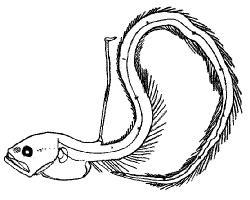
By Bob Goemans

Plankton means wanderer and refers to a myriad of plants and animals that are generally, though not always, minute in size and which are all prisoners of ocean currents. Planktonic organisms generally float along passively with the currents even though some forms are capable of limited movement in the upper sunlit areas. The two largest divisions of the Plankton group are divided into two categories: plants, and animals. The time spent adrift in this plankton soup can last from either a few hours or their entire lifetime. The plant division is termed "Phytoplankton," with the animal division called "Zooplankton."
The animal species that live out their entire life in planktonic soup are referred to as holoplankton. These consist of some, but not limited to, worms, copepods, shrimp, tunicates, krill, amphipods, and jellyfish. Those which live only a portion of their life in planktonic soup are referred to as meroplankton. They consist of a various number of fish and invertebrate, which usually spend a part of their early life drifting on the ever-moving currents.

The larval form of a carapid fish (Echiodon pegasus). The long spine (vexellum) at the front of the dorsal fin has a fleshy tip that closely resembles a copepod and may be used as a lure for smaller planktonic predators. The fish loses the spine before settling out of the plankton to take up life in it's adult niche....they live in the anus of Sea Cucumbers!
Drawing by Craig Dolphin
As for the division called 'Phytoplankton' it partly consists of diatoms and dinoflagellates. Diatoms have their cell walls composed of silica, instead of cellulose, which is the cell wall material of most other plants. Their growth rate is exceeding rapid in the upper sunlit levels of the oceans. They are a nuisance brown golden algae in the aquarium where silicate levels are not controlled.
Dinoflagellates have the ability to move via the beating action of two small whip-like devices called flagella. They are well known for causing the dreaded "Red Tide" phenomenon. Different species of dinoflagellates either contain toxins in their body or release them directly into the water. Filter feeders, i.e., clams, mussels can absorb these toxins, and some can become dangerous to the shellfish consumer.
© 2012 Bob Goemans. All rights reserved.
The material on this site may not be reproduced, distributed, transmitted, cached or otherwise used, except with the prior written permission of Bob Goemans.

